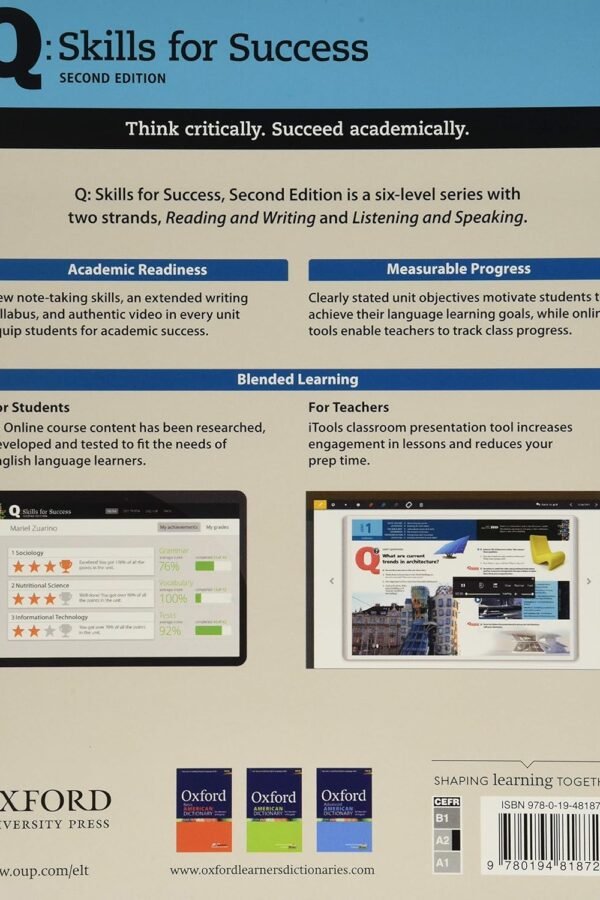The process designed to help new employees become familiar with their jobs and organizations plays a crucial role in ensuring a smooth transition and successful integration into the workplace. Companies understand the importance of providing comprehensive training and orientation programs to ensure that new hires have a deep understanding of their roles, responsibilities, and the overall structure of the organization. By offering a systematic onboarding process, employers can equip employees with the necessary knowledge and skills to excel in their job, foster a sense of belonging within the company, and ultimately contribute to the organization’s success.
Onboarding Process

Introduction to the Onboarding Process
The onboarding process refers to the comprehensive system that organizations use to help new employees become familiar with their job responsibilities, company culture, and overall work environment. It is a critical stage in the employee lifecycle and sets the foundation for a successful and productive tenure. The primary goal of the onboarding process is to support new employees in their transition, facilitate their integration into the organization, and ensure they have the necessary resources and support to thrive in their roles.
Importance and Benefits of Onboarding
Effective onboarding plays a crucial role in ensuring a smooth transition and integration for new employees. By providing guidance and support, organizations can facilitate the assimilation of new hires into their roles, teams, and the overall company culture. Here are some key benefits of a robust onboarding process:
Smooth Transition and Integration
By familiarizing new employees with the organization’s values, mission, and expectations, the onboarding process enables a seamless transition into their new roles. It helps them understand the company’s vision and how their individual contributions align with organizational goals, fostering a sense of purpose and belonging from the start.
Increased Productivity and Performance
A well-executed onboarding process has been proven to enhance productivity and performance. When new employees have a clear understanding of their responsibilities, access to necessary resources, and receive proper training, they can quickly get up to speed and start contributing effectively to their teams and the organization as a whole.
Higher Employee Engagement and Satisfaction
Onboarding sets the tone for the employee’s overall experience within the organization. When new hires feel supported and welcomed, they are more likely to feel engaged and satisfied in their new roles. This increased engagement leads to higher levels of commitment, motivation, and loyalty, ultimately benefiting both the individual and the organization.
Reduced Turnover and Costs
A well-planned and executed onboarding process can significantly reduce turnover rates and associated costs. When new employees have a positive onboarding experience that helps them understand the company’s values, culture, and their role within the organization, they are more likely to stay long-term. This helps organizations save money on recruitment, training, and lost productivity that may result from high turnover.
Building a Positive Company Culture
Onboarding provides an opportunity to introduce new employees to the organization’s culture, values, and norms. By integrating them into the company’s culture early on, organizations can foster a positive work environment and create a strong sense of belonging among employees. This promotes collaboration, teamwork, and employee satisfaction, contributing to a thriving organizational culture.
Key Components of Onboarding
An effective onboarding process consists of several key components that work together to provide a comprehensive experience for new employees. These components ensure that new hires receive the necessary support, information, and resources to succeed in their roles. The key components of onboarding include:
Pre-boarding Activities
Pre-boarding activities occur before an employee’s official start date and involve activities such as sending welcome emails, providing necessary paperwork, and explaining the onboarding process. This early engagement helps new hires feel welcomed and prepared.
Orientation and Company Introduction
Orientation sessions are a vital part of the onboarding process as they provide new employees with a comprehensive introduction to the organization. These sessions typically cover the company’s mission, vision, values, organizational structure, key stakeholders, and company policies and procedures. It is an opportunity for new hires to get to know the company’s history, culture, and overall direction.
Training and Skill Development
Training and skill development play a crucial role in equipping new employees with the knowledge and skills necessary to excel in their roles. This includes job-specific training, technical and software training, professional development workshops, and access to e-learning modules and resources. Well-rounded training programs ensure new hires have the necessary tools to perform their tasks efficiently.
Socialization and Integration
Socialization and integration activities aim to help new employees build relationships, establish connections, and feel a sense of belonging within their teams and the organization as a whole. This can include activities such as team-building exercises, employee social events, and opportunities to meet colleagues and key stakeholders.
Ongoing Support and Development
The onboarding process should not end after the initial weeks or months. Organizations should provide ongoing support and development opportunities to ensure new employees continue to grow and succeed. This can include coaching and mentoring programs, ongoing training and learning opportunities, career progression pathways, and employee engagement and recognition initiatives.
Setting Expectations and Goals
Setting clear expectations and goals is a fundamental aspect of the onboarding process. By clarifying job responsibilities, establishing performance expectations, and defining career development pathways, organizations help new employees understand what is expected of them and what they can strive for in their roles. Additionally, creating a personalized onboarding plan that aligns with individual goals and aspirations can further enhance the onboarding experience.
Clarifying Job Responsibilities and Objectives
During the onboarding process, new employees should receive clear and concise information about their job responsibilities and objectives. This includes understanding the scope of their role, their key tasks and deliverables, and how their work contributes to the overall success of the organization. Clear communication in this regard sets the foundation for strong performance and reduces ambiguity.
Establishing Performance Expectations
Defining performance expectations is crucial to ensure new employees understand the standards they are expected to meet. This can involve setting goals, outlining key performance indicators (KPIs), and providing feedback mechanisms to track progress. By establishing clear performance expectations, organizations enable new hires to align their efforts with organizational objectives and work towards continuous improvement.
Defining Career Development Pathways
Promoting career growth and development is essential for retaining top talent. During the onboarding process, organizations should introduce new employees to potential career development pathways within the organization. This can include discussing opportunities for advancement, skills enhancement, and ongoing learning and development. Aligning personal aspirations with organizational avenues for growth encourages long-term commitment and engagement.
Creating a Personalized Onboarding Plan
To optimize the onboarding experience, organizations should create personalized onboarding plans for each new employee. These plans take into account the individual’s unique background, skills, and goals. By tailoring the onboarding process to meet specific needs, organizations demonstrate their commitment to employee success and ensure a more effective and meaningful onboarding experience.

Orientation and Company Introduction
Orientation sessions and company introductions provide new employees with a holistic understanding of the organization they have joined. These activities are designed to familiarize new hires with the company’s mission, vision, values, structure, and culture.
Introduction to the Organization’s Mission, Vision, and Values
During orientation sessions, organizations should clearly articulate their mission, vision, and values. This provides new employees with insight into the organization’s overarching purpose and long-term goals. Understanding and aligning with the organization’s mission and values can help employees feel connected to a larger purpose and guide their decision-making and behavior.
Understanding Organizational Structure and Departments
New employees should be introduced to the organization’s structure and the various departments within the company. This overview helps them understand how different teams and functions collaborate, promotes cross-departmental understanding, and facilitates effective communication.
Meeting Key Stakeholders and Colleagues
It is essential for new employees to have the opportunity to meet key stakeholders within the organization, such as senior leaders, managers, and colleagues. These introductions build professional relationships, foster open lines of communication, and help new hires understand the network of people supporting them in their roles.
Providing an Overview of Company Policies and Procedures
During the onboarding process, new employees should receive an overview of the company’s policies and procedures. This includes information on topics such as code of conduct, employee benefits, leave policies, and any other guidelines specific to the organization. Familiarity with these policies ensures adherence to company standards and promotes a harmonious work environment.
Providing Necessary Resources
To enable new employees to perform their roles effectively, organizations must provide the necessary resources. This includes tangible tools, access to information systems and software, as well as a suitable workspace and facilities.
Providing Required Tools and Equipment
Organizations should ensure that new employees have access to the tools and equipment they need to perform their jobs efficiently. This may include providing laptops, software licenses, specialized equipment, or any other resources specific to the employee’s role. By equipping new hires with the necessary tools, organizations demonstrate their commitment to their success from day one.
Access to Information Systems and Software
In today’s digital age, access to information systems and software is crucial for efficient and effective work. Onboarding should include providing new employees with the necessary accounts, permissions, and training to navigate and utilize company-specific systems. This ensures that employees can access the information and resources needed to carry out their responsibilities.
Access to Employee Handbooks and Manuals
Employee handbooks and manuals serve as valuable resources for new employees. These documents typically contain information on company policies, procedures, benefits, and other relevant guidelines. Providing new hires with access to these resources allows them to refer to them as needed, promoting a clear understanding of expectations and processes within the organization.
Assigning a Workspace and Necessary Facilities
Assigning a workspace to new employees is essential for facilitating their integration into the organization. This includes providing a dedicated desk or office space, necessary facilities such as printers and office supplies, and ensuring a comfortable and welcoming work environment. A conducive workspace contributes to employee satisfaction and productivity.

Training and Skill Development
Comprehensive training and skill development programs are essential components of the onboarding process. By providing new employees with the necessary knowledge and skills, organizations enable them to perform their job responsibilities effectively.
Job-specific Training
Job-specific training focuses on equipping new employees with the skills and knowledge required to carry out their specific roles. This includes familiarizing them with processes, procedures, and best practices relevant to their job responsibilities. By providing job-specific training, organizations ensure that new hires have the necessary foundation to excel in their roles.
Technical and Software Training
In many roles, technical skills and software proficiency are vital for success. Onboarding programs should include training on any software or technical tools that new employees will be using. This training can be conducted through workshops, e-learning modules, or on-the-job training. Technical and software training ensures that new hires can fully utilize the technology available to them.
Professional Development Workshops
Professional development workshops are an opportunity for new employees to enhance their skills and knowledge beyond their immediate job responsibilities. These workshops can cover topics such as communication skills, time management, leadership, and other areas that contribute to professional growth. By providing professional development opportunities during onboarding, organizations demonstrate their commitment to employee growth and development.
E-learning Modules and Resources
E-learning modules and resources are valuable tools for ongoing learning and development. These modules can be accessed by new employees at their own pace and cover topics ranging from technical skills to professional development. E-learning resources enable continuous learning and knowledge refreshment, contributing to long-term employee development.
Mentorship and Buddy Programs
Mentorship and buddy programs are effective ways to support new employees during the onboarding process. These programs provide guidance, support, and a network of experienced professionals to help new hires succeed in their roles.
Assigning a Mentor or Buddy
Assigning a mentor or buddy to new employees can greatly enhance their onboarding experience. Mentors or buddies are experienced employees who provide guidance, share insights, and support new hires in their transition. These relationships offer a safe space for new employees to seek advice, ask questions, and gain a deeper understanding of the organization.
Guidance and Support from Experienced Employees
Mentors and buddies offer valuable guidance and support to new employees. They help bridge the knowledge gap, navigate organizational processes, and provide insights into the company’s culture. By leveraging the experience of these individuals, new employees can accelerate their learning curve and integrate more seamlessly into the organization.
Enhancing Networking and Communication Skills
Mentorship and buddy programs help new employees develop networking and communication skills. By fostering relationships with experienced employees, new hires can expand their professional networks and gain exposure to different areas of the organization. This not only supports their immediate onboarding but also contributes to their long-term career growth within the company.
Providing Feedback and Addressing Concerns
Mentors and buddies play a critical role in providing feedback and addressing any concerns that new employees may have. By creating a trusting and open environment, mentors and buddies encourage new hires to share their experiences, challenges, and aspirations. Through regular check-ins and constructive feedback, mentors and buddies can identify areas of improvement and provide guidance to help new employees thrive.
Continuous Support and Development
To ensure long-term success and retention, organizations must provide continuous support and development opportunities beyond the initial onboarding phase. This ongoing support helps employees remain engaged, motivated, and committed to their roles.
Ongoing Training and Learning Opportunities
Organizations should offer ongoing training and learning opportunities to help new employees continuously develop their skills and knowledge. This can include workshops, webinars, conferences, and access to online learning platforms. By investing in ongoing training, organizations demonstrate their commitment to employee growth and professional development.
Coaching and Mentoring Programs
Coaching and mentoring programs should be available to new employees throughout their tenure with the organization. These programs provide individuals with valuable guidance, support, and opportunities for reflection and growth. By accessing coaching and mentoring resources, employees can continue to refine their skills, address challenges, and navigate their career paths effectively.
Career Progression and Advancement
Organizations should provide clear pathways for career progression and advancement. By outlining opportunities for growth, such as promotions or lateral moves, organizations motivate employees to continuously strive for excellence and continue adding value to the organization. Career progression frameworks provide a sense of direction and purpose, boosting employee engagement and loyalty.
Employee Engagement and Recognition
Employee engagement and recognition initiatives are crucial for maintaining a positive work environment and fostering a sense of appreciation. By recognizing and rewarding the contributions of new employees, organizations reinforce their value and motivate them to continue excelling. Engagement initiatives, such as team-building activities and social events, promote a sense of belonging and foster strong relationships within the organization.
In conclusion, the onboarding process is a critical phase in an employee’s journey with an organization. By implementing a comprehensive onboarding program, organizations can facilitate a smooth transition, enhance employee engagement and satisfaction, and drive long-term success. Through well-planned orientation, training, support, and ongoing development, new employees can quickly integrate into their roles, contribute effectively, and thrive within the organization’s culture.













